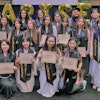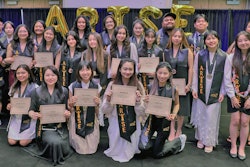When spider silk biologist/geneticist Dr. Cheryl Hayashi was the recipient of the prestigious MacArthur Fellowship in 2007, she saw it as an affirmation that it’s okay to work on something that might seem offbeat.
“I thought it was a huge victory for everyone who works on non-model organisms in biology,” says Hayashi, the curator, professor and Leon Hess Director of Comparative Biology Research, director of the Sackler Institute for Comparative Genomics, and professor at the Richard Gilder Graduate School at the American Museum of Natural History (AMNH).
Studying evolution through the lens of spiders requires that she come up with the methods, such as genetic resources, herself.
“Even a lot of the equipment I need to work on spider silks, I’m fabricating those tools myself,” she says. “I shop scrapbooking websites to look for devices I can use to make little cards to mount spider silk on.”
Hayashi grew up in Hawaii with an interest in nature. She describes the natural beauty that surrounded her as a living laboratory for evolution. The incredible biodiversity sparked her curiosity.
As an undergraduate at Yale University, Hayashi was stunned to see that where she grew up was in textbooks. She had an interest in biology, but it took a while to understand the research process and how one actually becomes a scientist.
With the library already full of information, she wondered what there was to discover. What changed her life was landing a job working in the lab of a biology professor. The ad for the position said the student would be responsible for feeding a lab animal colony that turned out to be a colony of spiders.















